Volkswagen Puts I.D. Buzz Electric Concept Car Into Production

Highlights
- Volkswagen I.D. Buzz concept car will arrive at dealerships in 2022
- Volkswagen is mainly targeting markets in North America, Europe and China
- The I.D. Buzz will haul both people and freight
At the Detroit Show in early 2017, Volkswagen showed the I.D. Buzz concept car, a fully electric vehicle that taps in to the spirit and vibe that made the VW Microbus such an iconic vehicle. Now, Volkswagen has taken the bold decision to put the Volkswagen I.D. Buzz concept car into production. VW announced the decision at the Pebble Beach Concours d'Elegance in California and will arrive at dealerships in 2022, after the compact four-door I.D. makes its debut. With the I.D. Buzz, Volkswagen is mainly targeting markets in North America, Europe and China.
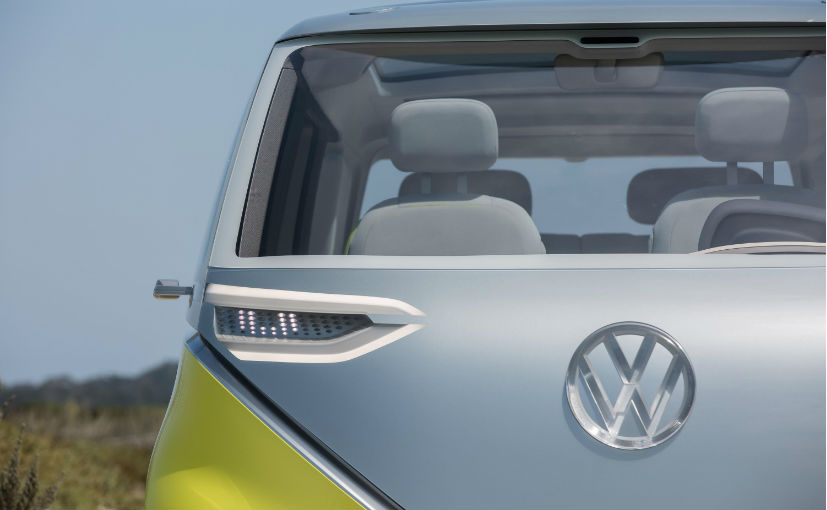
(Volkswagen's oldest and newest Microbuses will be separated by more than seven decades when the new model is launched)
Just like the concept car that was shown in Detroit, the production model will also have its batteries mounted in the vehicle floor. The I.D. Buzz won't just be a passenger vehicle and will haul both people and freight. Although Volkswagen's oldest and newest Microbuses will be separated by more than seven decades when the new model is launched. Based on the new all-electric architecture, the production version of the I.D. Buzz will incorporate many design ideas from the concept car, including multi-variable seating, interactive connectivity and highly automated driving.
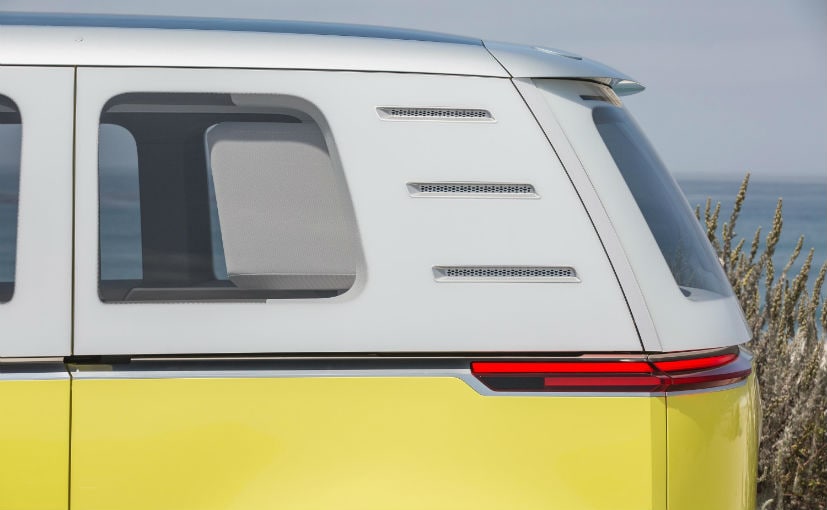
(Based on the new all-electric architecture, the production version of the I.D. Buzz will incorporate many design ideas from the concept car)
With a length of 4,942 mm, a width of 1,976 mm and a height of 1,963 mm, the concept car offers extraordinary space dimensions. The production version, which is based on the new all-electric architecture, will incorporate many design ideas from the concept car. It will also feature variable seating, interactive connectivity and highly automated driving. Expansion of the electric vehicle range is part of Volkswagen's Strategy 2025, which foresees more than 30 all-electric models by that time.
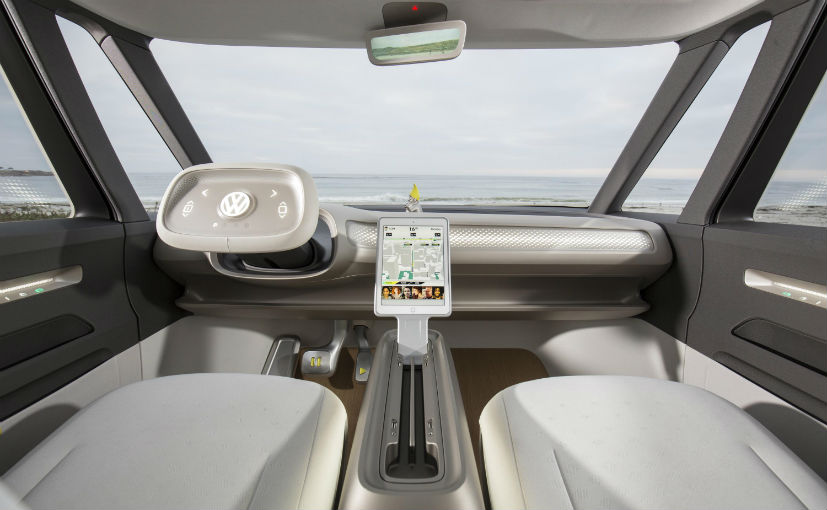
(The status of the I.D. Buzz can be seen at all times on the tablet and the augmented reality head-up display)
The zero-emissions all-wheel drive system has a total output of 363 bhp and an NEDC electric driving range of 600 kilometers. One electric motor at the front axle and one at the rear each deliver a power output of 198 bhp, distributed between the two axles by an 'electric propshaft'. The I.D. Buzz shown in Detroit can accelerate from 0 to 100 kmph in about 5 seconds, with a governed top speed of 159kmph. The I.D. Buzz's battery of 111 kWh can be charged to 80 per cent of its capacity within 30 minutes using the Combined Charging System (CCS) or an inductive charging interface, with a charging rate of 150 kW. As an alternative, the battery can be charged from any conventional household outlet and at charging stations.
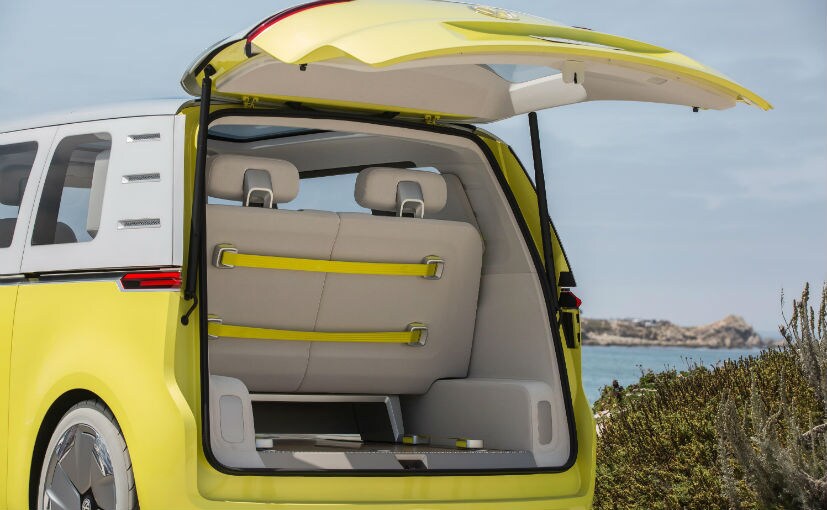
(The I.D. Buzz's battery of 111 kWh can be charged to 80 per cent of its capacity within 30 minutes)
The I.D. Buzz is the world's first fully autonomous multi-purpose vehicle. A slight push on the steering wheel makes it retract and merge into the instrument panel, switching the I.D. Buzz from manual control to the fully autonomous "I.D. Pilot" mode that could make it into production by 2025. The ambient lighting then switches from white light to mood lighting that is warm and relaxed. Moreover, the status of the I.D. Buzz can be seen at all times on the tablet and the augmented reality head-up display.
At the front, wrap-around ambient lighting forms a new era equivalent of chrome trim. It is actually an accent strip made of matte aluminum that is embedded in what designers call a sharp undercut. Indirect ambient lighting has been integrated into this full wraparound undercut, which also forms the 'V' of the front hood. The I.D. Buzz is also unmistakable from the rear. Here, the slender full-LED lights and large painted surfaces make up the iconic design. The doors and trunklids are power operated: opening the tailgate, front doors and rear sliding doors is initiated by sensors outside the vehicle. Thanks to the Digital Key, all the user needs to do is hold his or her hand over a marked area for entry.
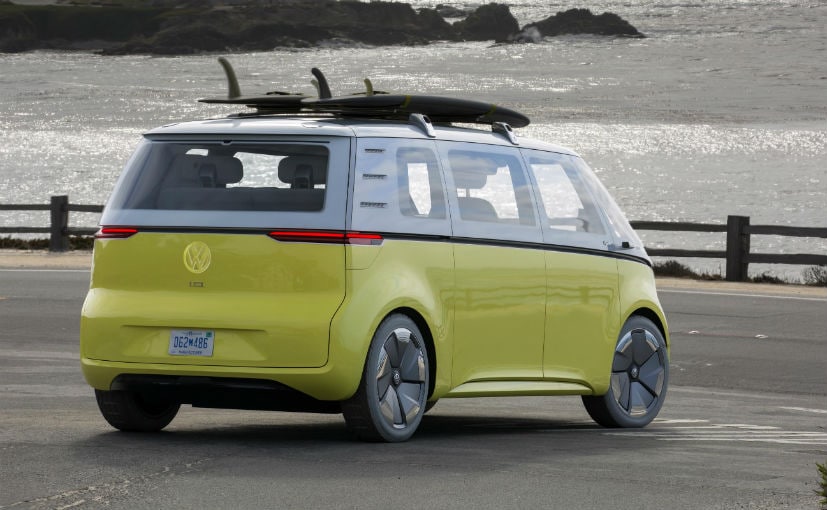
(The slender full-LED lights and large painted surfaces make up the iconic design)
There are few cars in the world that look as good in classic two-tone paint as the Microbus, which is why it was a must for the new I.D. Buzz. The car is painted in Silver Metallic above the seam that integrates the ambient lighting and in Cyber Yellow Pearl Effect below that line. The yellow hue is also found on the sidewalls of the tires, while the 22-inch aluminum-alloy wheels are painted in Galvano Gray Metallic.
Related Articles
Latest News
Popular Volkswagen Models
 Volkswagen VirtusEx-Showroom Price₹ 10.89 - 19.15 Lakh
Volkswagen VirtusEx-Showroom Price₹ 10.89 - 19.15 Lakh Volkswagen TiguanEx-Showroom Price₹ 35.17 Lakh
Volkswagen TiguanEx-Showroom Price₹ 35.17 Lakh Volkswagen TaigunEx-Showroom Price₹ 11.7 - 19.74 Lakh
Volkswagen TaigunEx-Showroom Price₹ 11.7 - 19.74 Lakh Volkswagen New TiguanEx-Showroom Price₹ 35.17 Lakh
Volkswagen New TiguanEx-Showroom Price₹ 35.17 Lakh Volkswagen Tiguan R-LineEx-Showroom Price₹ 49 Lakh
Volkswagen Tiguan R-LineEx-Showroom Price₹ 49 Lakh Volkswagen Virtus GTEx-Showroom Price₹ 17.48 - 19.35 Lakh
Volkswagen Virtus GTEx-Showroom Price₹ 17.48 - 19.35 Lakh














